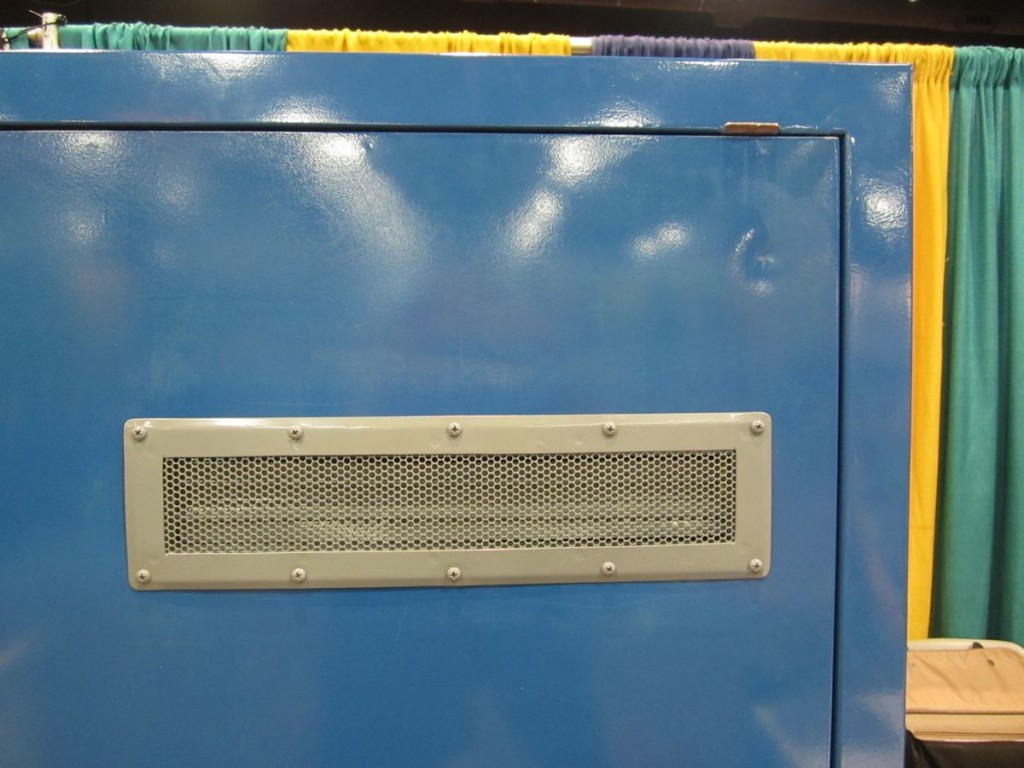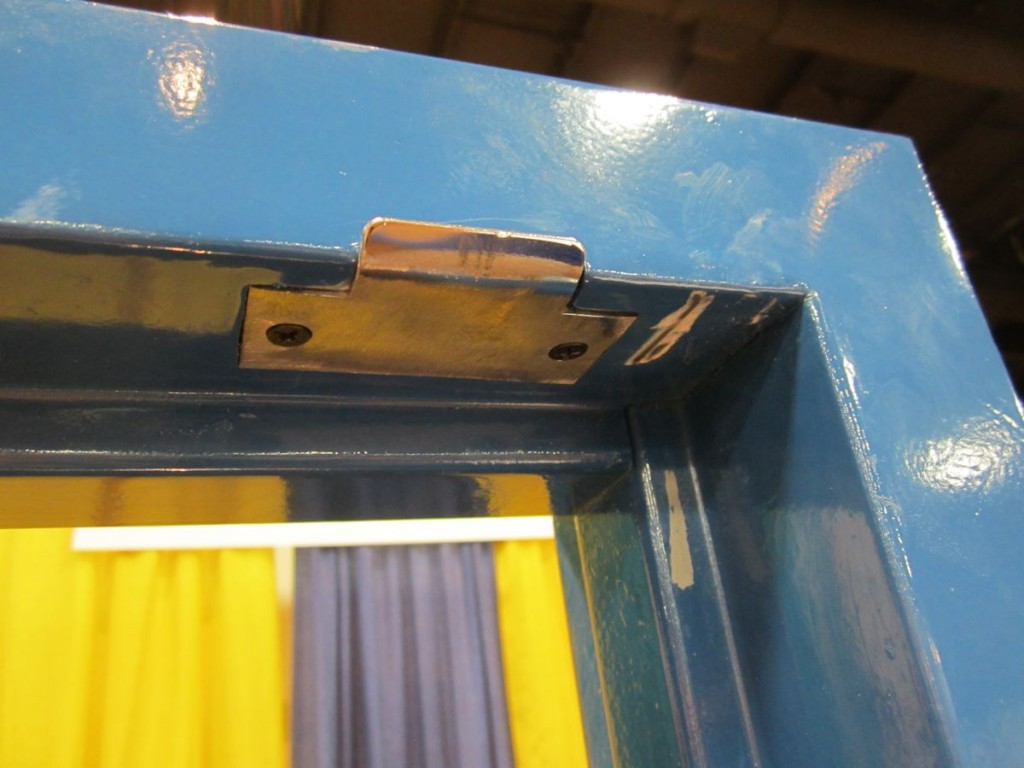Today I was able to spend some time on the trade show floor at CoNEXTions 2012, the Door & Hardware Institute conference. It was great to see so many old friends and some new products. My pal and code aficionado, Steve Bettge, tracked me down and escorted me to a booth where there was a product that was right up my alley.
I run into this issue all the time…when stairwells are pressurized to prevent smoke from entering the stair, the doors can become incredibly difficult to open and/or close because of the air pressure. We’ve looked at various hardware solutions to no avail – the pressure needs to be released somehow. The added complication is that stair doors are fire rated.
The CPE – Closer Pressure Equalizer is a really clever way of releasing some of the air pressure while maintaining the fire rating. It has been successfully tested per UL 10B and UL 10C for use on hollow metal fire doors with a rating up to and including 90 minutes.
To install the damper, a 15 1/4″ wide x 2 3/4″ high cutout is made in the door face, 8 1/4″ from the top edge and 2 3/4″ from the lock edge. An additional cutout (1 1/4″ x 1 1/4″) is made in the top of the door. (Note that these cutouts must be made in accordance with UL listing procedures, typically in a UL shop.) Double channels are installed around the cutout, a latch receiver (like a spacer) is installed in the top channel of the door, and the damper assembly is installed in the face cutout. Faceplates are installed over the damper assembly, as well as a trim ring. A latchbolt is installed in the top edge along with a flat strike (no hole) in the frame head, and this latchbolt interfaces with a gear mechanism that controls the damper.
When the door is opened slightly, the latch projects out of the top of the door and the damper opens, releasing some of the air pressure. When the door closes, the latch is retracted into the door, and closes the damper. It’s really an interesting and unique design. Check out the photos and video below and let me know what you think. If you have a better solution to this air pressure problem, I’m all ears!
And if you’d like more information about this product, please contact Hubert Cote of CHILCO Development – 603-315-3512 or jmemb@comcast.net.
You need to login or register to bookmark/favorite this content.









Very Awesome! I hope the inventor makes alot of money, he found the answer.
That’s Great!
As an Institutional Locksmith in a large medical center complex, I’m fine-tuning stairwell closers all of the time, trying to strike a balance between ease of use, and code compatibility.
Glad to know there’s a solution out there!
Does it carry any testing/listing??
Yes. It’s UL listed. Would you allow it in your jurisdiction?
more than likely, if we ever get a high rise in our city!!
should have asked, does this device also, have to be tested with the door as one complete assembly??
because it looks like if not, than joe buys a rated door, joe takes saw to door, then joe installs this thing!! so does that hurt the listing of the rated door??
I’m looking into the testing, but I think that because they’ve tested the product, it would not have to be retested with each door manufacturer. Joe can’t cut the hole in the field – it would have to be done at the factory or in a UL/WH door shop.
the fire rating of the door, as expressed on the door label is “toast”, so to speak. as a component of a fire rated structure (i.e.: wall, door, frame, strike, closer, hinges, locks, etc..) it all becomes virtual “toast” as to legal and definitions…
when ‘joe’ the door butcher takes it upon himself to do this type of thing.. in a approved door facility who can relable doors, such as warnock hersey they can slap a $5.00 label on a door before it goes out to the job. onsite relabeling ? it can cost $1300 just for a relabeler truck roll to the jobsite.. so the wiser choice is ?
Very interesting. I’m sure the fire door inspection and damper companies will have to add this to their lists. Thanks for sharinng Lori.
we have the same issue over here in south korea but with a somewhat different approach to resolve. AHJs over here say to use a supplementary closing device, which operates via spring to help the door closer close the door shut once the stairwell becomes pressurized. the manufacturers say these devices comply to code, meaning elderly & children will be able to open the door with ease (which still has some grey areas) but i guess we won’t know until it has been put into a real-life emergency situation.
What exactly is the supplementary closing device being used. It’s sound like it engages when the fire alarm go off.
I am looking at this product and trying to find the contact of this manufacturer. Lori. do you still have this contact? I was trying to search the company name or call the number, both making me confused, cause no such person or company exist.
thanks!!